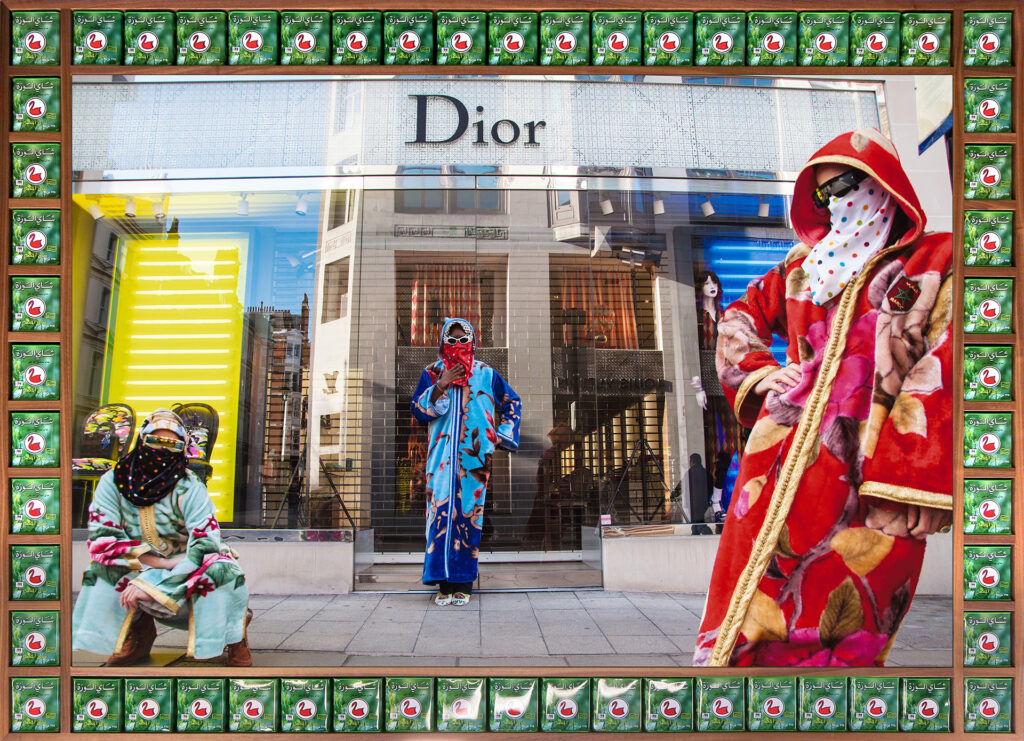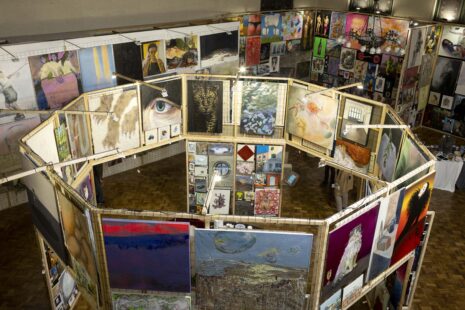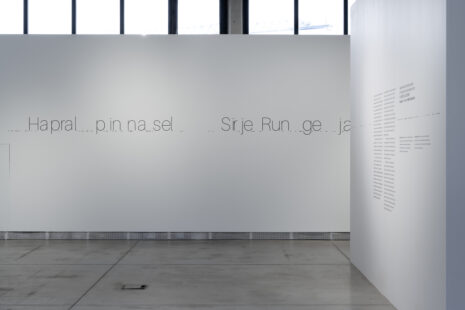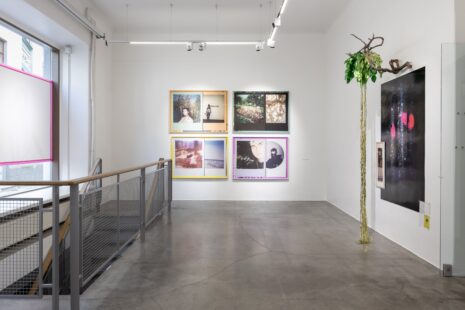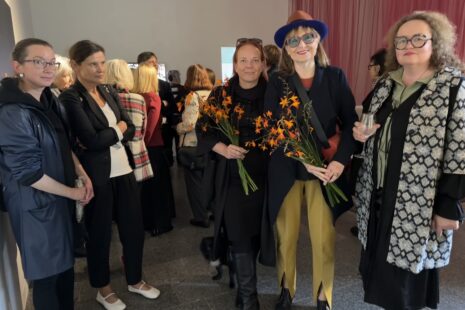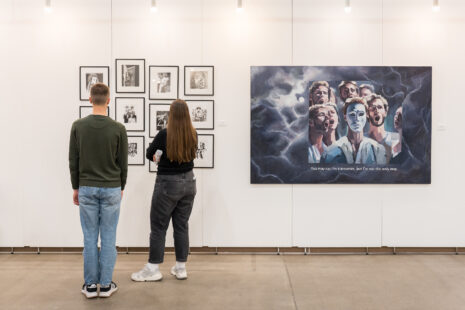Growing up during the 1960s in the fishing town of Larache, Morocco, Hassan Hajjaj encountered photography via street-photographers who took pictures of people and then sold them the photographs, beach-photographers who captured the beach-life, and snapshots from movies printed on posters. During this time, his father lived and worked in London, while the family was still in Morocco, but in the beginning of the 1970s Hassan, his sisters, and his mother moved to his father, and it was time for an entirely new chapter in young Hassan’s artistic life.
“For me it began when I, as a twelve-year-old newcomer in London, wanted to show my friends something from my native country. They came from places like the Caribbean, Brazil, and India, places brimming with cultural belonging familiar to everyone: reggae, Pelé, samba, calypso, rai-music, and more. I wanted them to know that I was also from a cool place, so I created things, graffiti, and scenarios that I shot with a borrowed camera. Things that mixed the Moroccan with the vibrant London that we all lived in. But it was in 1989 when I bought myself a used Pentax from Zak Ové that everything really took off,” says Hassan Hajjaj. Today he is represented at, among other places, Brooklyn Museum in New York, Los Angeles Museum of Contemporary Art, and Victoria & Albert Museum in London.
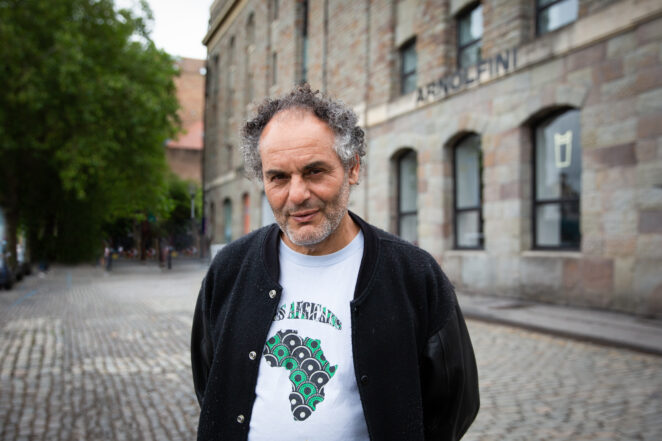
Artist Hassan Hajjaj at Arnolfini in July 2020. Photo: Lisa Whiting
Hajjaj borrows, mixes and brings multifaceted artistic expressions into his work, exploring themes like cultural appropriation or taking expressions belonging to one culture and using them in another, in a way that can be perceived as demeaning. Maarja Loorents, the exhibition manager at Fotografiska Tallinn: “The new year brings a whole array of exciting photographers from near and far to our exhibition spaces. We are happy to start the new year off with a versatile Moroccan-born artist, whose work invites us to a world that is simultaneously distant and unknown, as well as rich and unique. The frames of his works are remarkable works of art too, often created from reused materials.
Hajjaj’s art is absolutely bursting with the joy of colours and life, patterns, energy, rhythm, and ingenuity. All imaginable materials from Morocco, together with ones from contemporary London, are used to create a mix that instantly signals that this is a work by Hassan Hajjaj: photographer, and artist – by profession and in life. Whether it’s photography, installation, fashion with a touch of Pop Art, interior design, or furniture made from recycled Moroccan everyday objects, they’re all imbued with his typical expression of rhythmic sway – preferably hip hop and reggae.
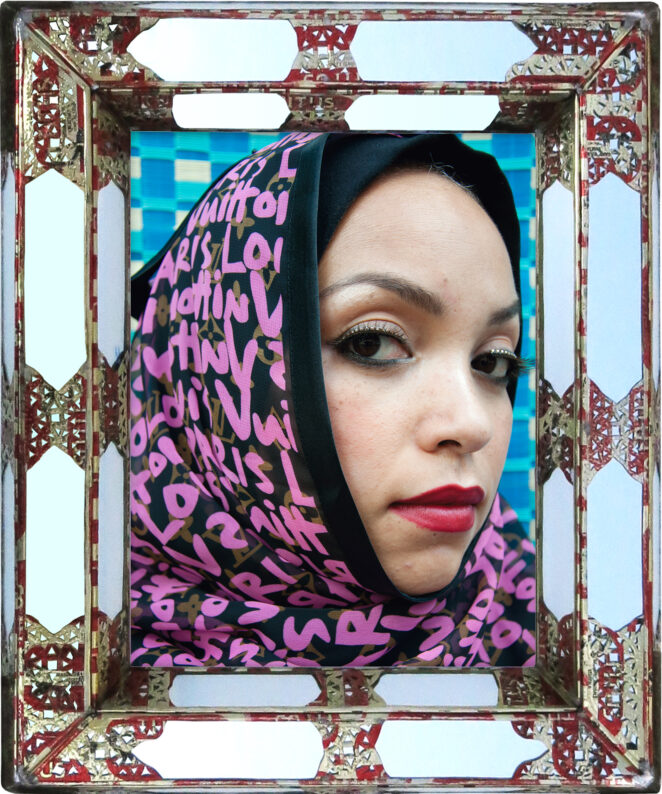
“The curiosity to just try things, and make mistakes without holding on to prestige, are some of the benefits of being self-taught. To affect people, and initiate discussions and conversations is probably my strongest motivator. It’s not that I always have specific answers, but in a living culture questions need to be asked to make us think, and think again”, says Hassan Hajjaj, who nowadays lives in both London, and in Marrakech, where he has a store that doubles as a place to hang out with friends. “Culture is ever-changing. Like, for example, the wearing of veils: my grandmother didn’t, my mother does, but not my sisters. Symbols are transformed by their context. That veils are sometimes seen in my pictures might be something else worth pondering…”.
Hajjaj is often called “the Andy Warhol of Marrakech”. “The expression appeared in an article sometime in the 90s. ” On the one hand, it is flattering to be mentioned in relation to a legend like this, on the other hand it might be questionable that when lifting up and defining something from Northern Africa, or what’s so called Third World, it automatically needs to be related to a Western success…”, says the artist.
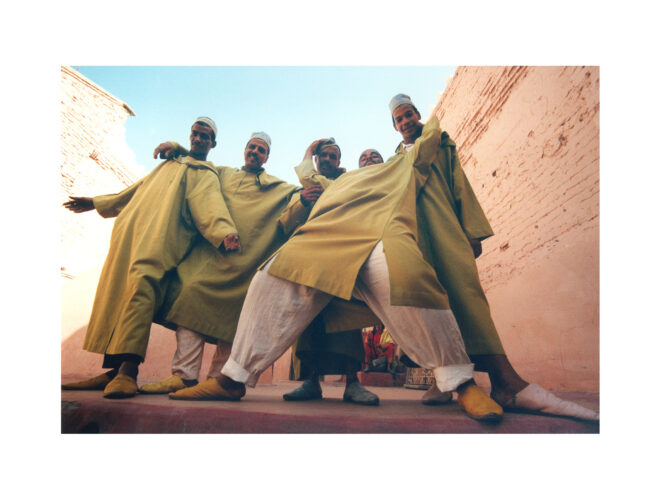
The title, “Vogue, the Arab issue” alludes to an experience that Hajjaj had when he, as an English-speaker, helped a friend in whose house a big fashion magazine had a photo-shoot. He realised that none of the participants – makeup-artists, models, photographers, and more – had anything to do with Northern Africa. Everyone was flown in, and the beautiful backyard was only an exotic backdrop. That’s when he decided to have his own fashion-shoot packed with local models, design, and cultural context: now it’s one of the series that he proudly exhibits at Fotografiska.
The exhibition “Vogue, the Arab issue” is open at Fotografiska from 14 January to 17 April 2022.

